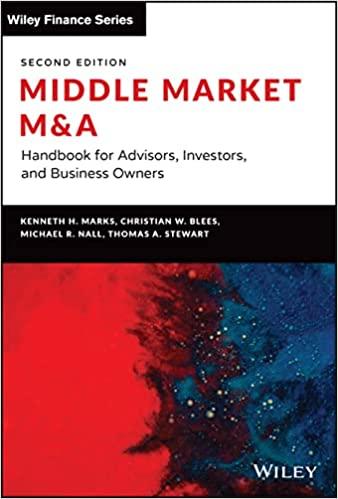Question
4.Which one of the following statements about the approach to bond pricing is NOT true? Select one: A. To calculate a bond's price, one needs
4.Which one of the following statements about the approach to bond pricing is NOT true?
Select one:
A. To calculate a bond's price, one needs to calculate the present value of the bond's expected cash flows.
B. The value, or price, of any asset is the future value of its cash flows.
6.Which one of the following statements is NOT true?
Select one:
A. The yield to maturity of a bond is the discount rate that makes the present value of the coupon and principal payments equal to the price of the bond.
B. It is the yield that the investor earns if the bond is held to maturity, and all the coupon and principal payments are made as promised.
C. A bond's yield to maturity will not change as interest rates increase or decrease.
D. If the bond is priced at par, its yield to maturity is the same as its coupon rate.
C. The required rate of return, or discount rate, for a bond is the market interest rate called the bond's yield to maturity
D. In the price equation, include as the expected future cash flows the coupons that the bond will pay and the maturity value to be received.
7.Bonds sell at a premium to the par value when market yield to maturity for the bond is:
Select one:
A. less than the bond's coupon rate.
B. greater than the bond's coupon rate.
C. equal to the bond's coupon rate.
D. Market rates are irrelevant in determining a bond's price.
9.Zero coupon bonds sell well below their face value because
Select one:
A. They are high risk
B. They don't offer any collateral
C. They don't pay coupons
D. Regulators have banned them.
Step by Step Solution
There are 3 Steps involved in it
Step: 1

Get Instant Access to Expert-Tailored Solutions
See step-by-step solutions with expert insights and AI powered tools for academic success
Step: 2

Step: 3

Ace Your Homework with AI
Get the answers you need in no time with our AI-driven, step-by-step assistance
Get Started


